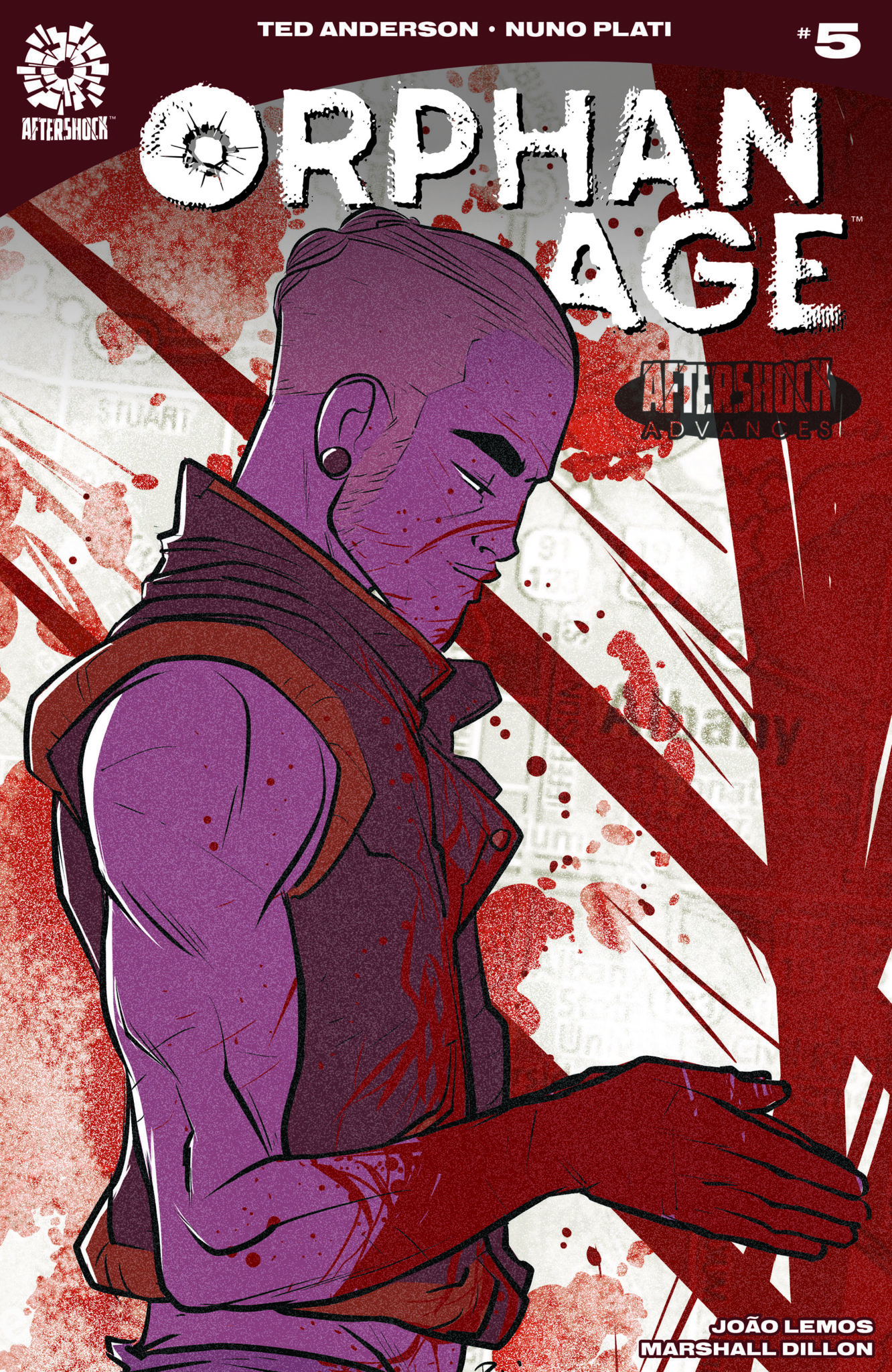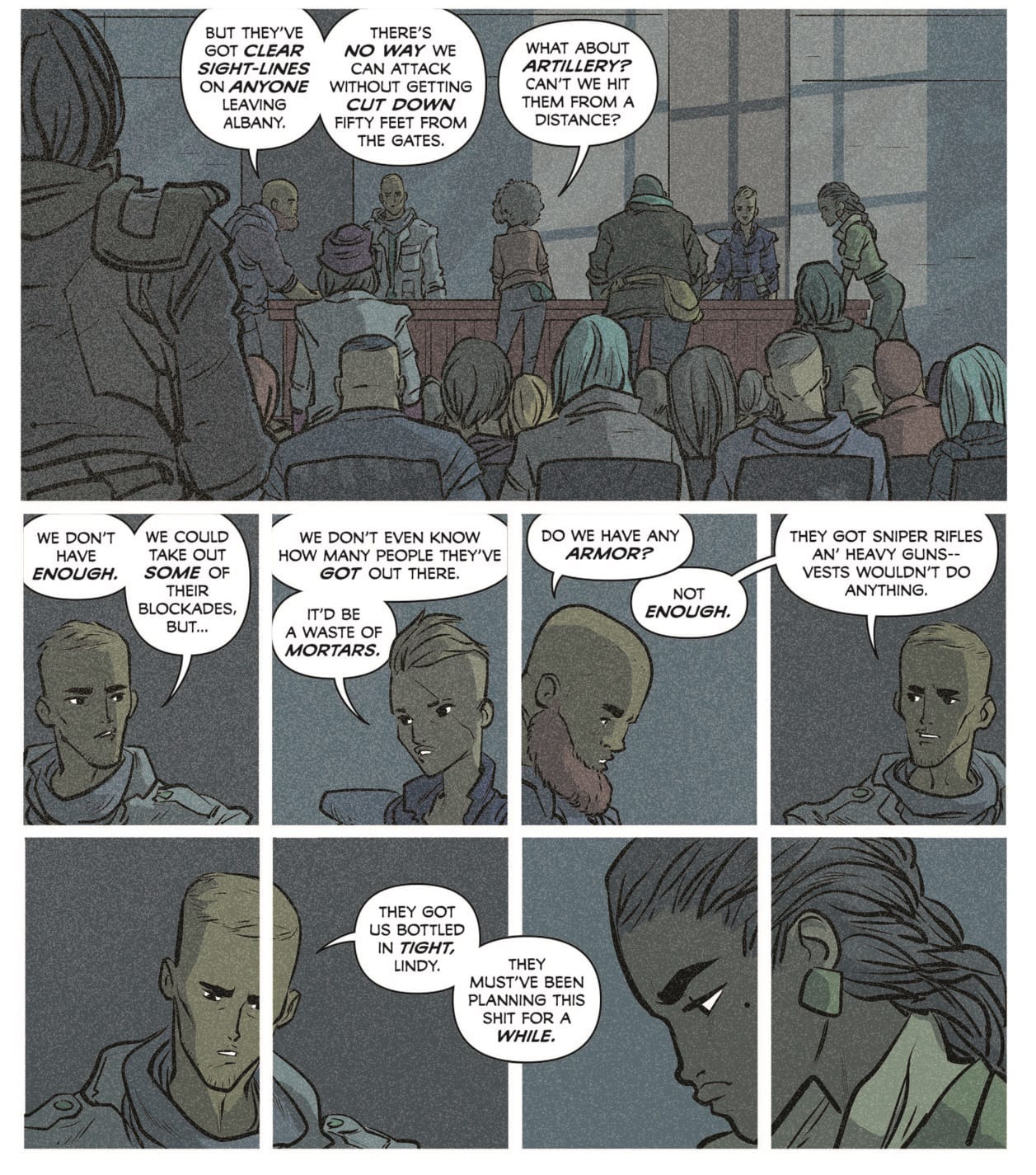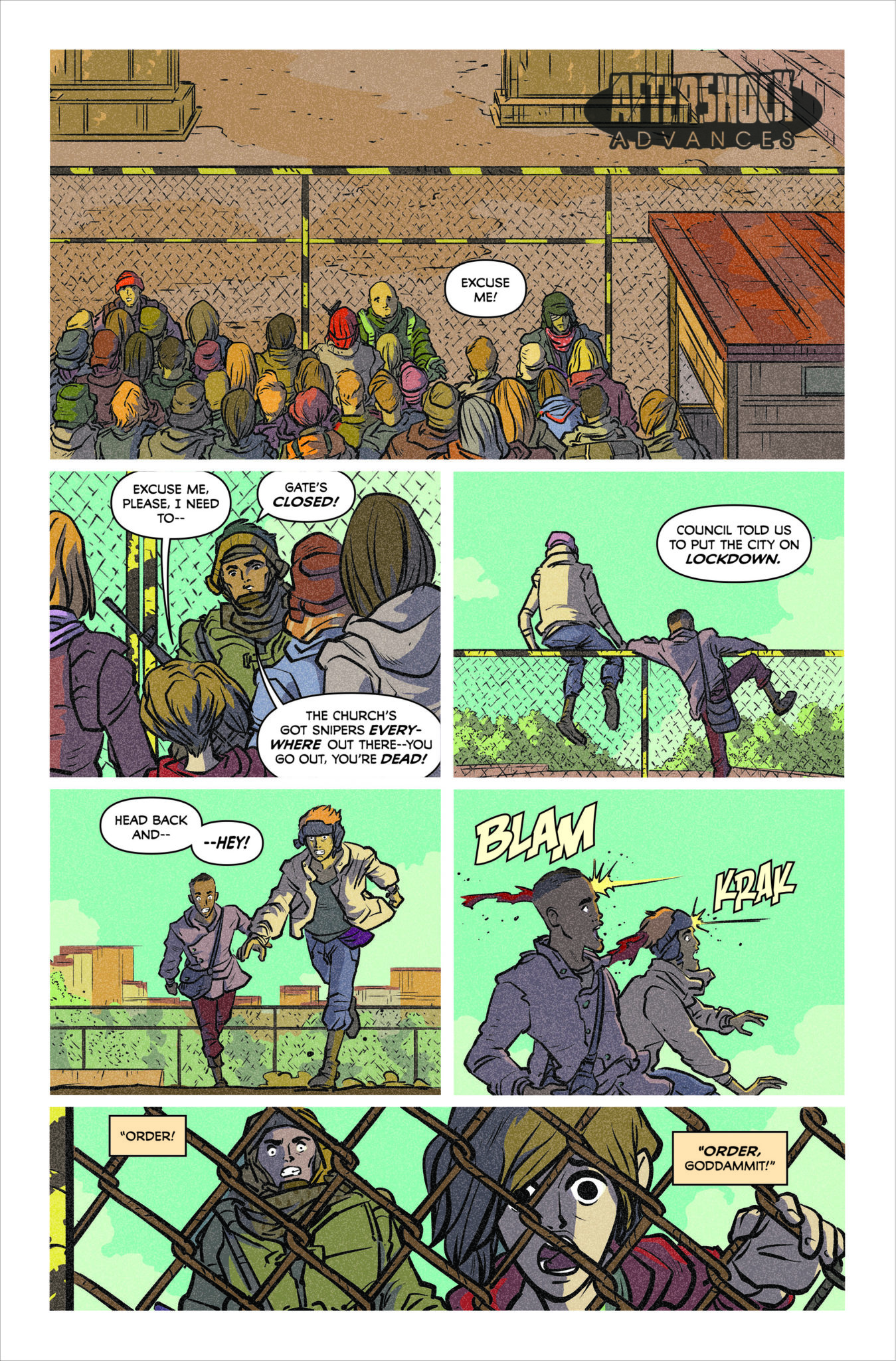Fear grips the city of Albany as members of The Church bring violence to their community in the latest issue of Orphan Age from AfterShock Comics. The terror of living in a post apocalypse world is hammered home by the creators as the plot takes a disturbing turn.
Chapter 5 of Orphan Age is entitled Exodus and deals with themes familiar to anyone who has every read a post-apocalypse style story. Whether it is the fear of starvation or a hoard of brain eating zombies, the decision to stay or flee a settlement faces anyone who has survived for any length of time. In Ted Anderson’s vision the threat comes from a violent, misguided religious sect who set siege to the free state of Albany. Much of this issue is taken up with the reaction of the towns folk, focused of course on the central cast.

A Shrinking Landscape
Anderson uses the situation to explore the relationships of his cast and to allow new facets of their personalities to shine through. Jeopardy creates drama and drama produces the chance to really get into a character’s psyche. The beauty of this chapter is that Anderson introduces the threat and then increases the tension via the reactions of the people. The Church and their followers are barely seen, their actual actions a side note to the narrative. This chapter, like each previous one, is about the characters, about Princess, Willa and Daniel especially.
The plot revolves around a siege and all that it entails. The strain it puts on the inhabitants of the city and the divisions that can form. Nuno Plati’s art work captures this aspect of the story stunningly. He uses the panels to board the characters in, reinforcing the imprisonment with crisscross wire fences, walls of small windows and gutters running through images. For many of the panels, he places single characters in the scene with virtually no background. This highlights the separation between the characters and is heightened even further when Plati stretches the same close up over two panels.
The effect this has on the comic is that it creates an uncomfortable atmosphere. The fear and desperation of the town is evident without having to show a city in turmoil. This also permits Plati the opportunity to focus on specific relationships, drawing attention to them.
This is most notable with Daniel and Lindy who are growing closer and closer. Plati allows them to share panels with tentative transitions from one moment to the next illustrating the nervousness surrounding them. Plati then draws back to extreme close ups with room for only one character when their discussion turns to the problems they face.

Orphaned Characters
The coloring helps to set the atmosphere of the piece. Nuno Plati and Joao Lemos flood the town of Albany with dark, shadowy hues. Blocks of color mark out backgrounds but the foregrounds are not much different in tone. The isolation of the people and foreboding they feel about the situation is made clear via the oppressiveness of the color.
The speech balloons are like white holes piercing this gloom. It draws the reader to the speech allowing the character interactions prominence on the page. The emphasis in the text by Marshall Dillon is juxtaposed against the facial images drawn by Plati giving each moment a fuller reading.
The contrast of the speech and art on a page is used to not only focus the reader’s attention on character but also to highlight moments where there is no speech. Some establishing panels lack sound helping to fix location and others act more like inserts with an abstract moment breaking up the scene. This is most often used to create character isolation or a strong emotional reaction.

Conclusion
This issue is very conversation heavy but there does come a moment of action at the end which is a release for the reader as much as for some of the characters. The moment is like a cork popping from a bottle with all the tension building behind it. It is a much needed scene and finishes the chapter off in style. The consequences of this issue will follow the characters through the next stages of their story and there are a number of haunting images that will take a long time to shake off.
This embracing style of storytelling is perfect for comic books. The pacing can be difficult but when it has this calibre of artist working on it the story flows, beat for beat. The strong layouts and attention to character makes this issue of Orphan Age work in spectacular fashion. This series is heading in the right direction and slowly marking itself as a worthy successor to The Walking Dead.

